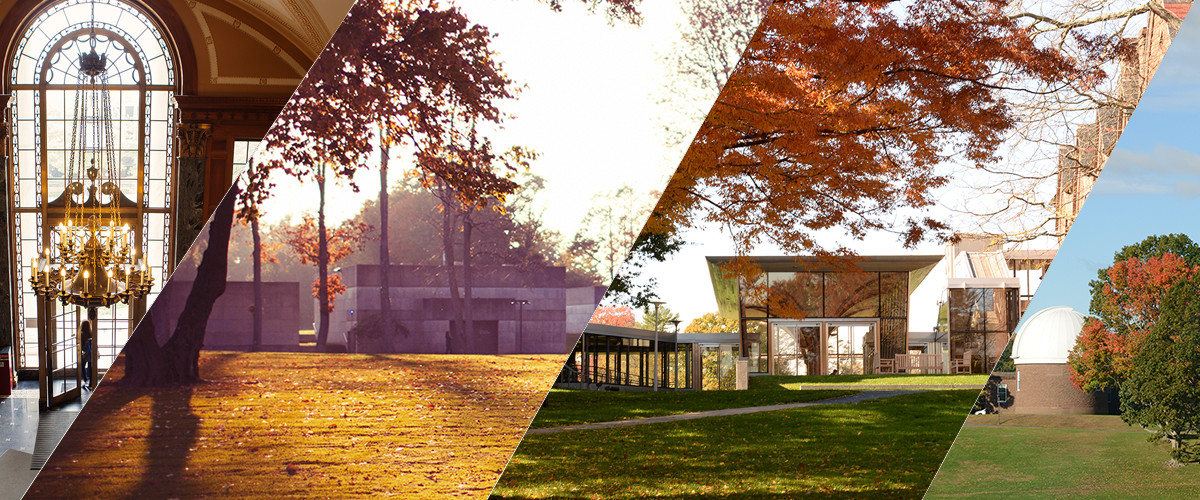-

The School Colors
Cardinal red and black were adopted as Wesleyan’s colors in a general college meeting on Oct. 10, 1884. An editorial in the Wesleyan Argus endorsed the change: "Lavender [the former color] is not a striking color. Waving as a pennant or smoothed into a bow, it has not the brilliant tint which is desirable in a college color...Cardinal and Black make a combination that is rich and striking." In 2018, we modernized our school colors to ensure consistency in both digital and print formats. -
The Fight Song
“Battle Cry"
Words and music by Clifford L. Waite, Class of 1906And then it’s fight for old Wesleyan,
never give in.
Fight to the end
when might and right shall win.
So keep on fighting ’til victory
crowns everyone;
And then it’s fight, fight, fight, fight
for Wesleyan!Go Wes!
-

The Cardinal
The Cardinal was adopted as the nickname for Wesleyan’s athletic teams in the early 1930s. Until then, Wesleyan’s athletic teams were known as "The Methodists." A newspaper report of a game in 1932 with the University of Rochester referred to the team as "the Mysterious Ministers from Middletown," a slogan resented by half the team. The following spring, one of the football players, Walter W. Fricke ’33, the baseball captain, purchased a baseball jacket with a cardinal on the breast pocket. The idea caught on as a solution to the quest for an acceptable nickname.
In 2019, with input from faculty, staff, coaches, students and alumni, Wesleyan created a custom cardinal icon that is unique to Wesleyan University. The primary elements of the Cardinal were retained but refined, bringing to light a modern and bold bird, reflecting the determined, powerful, and fierce spirit of the Wesleyan community. The Cardinal colors and lines are now consistent with the University's visual identity, and designed with digital and mobile uses in mind.
-
The Alma Mater
“Come Raise the Song"
Words by F.L. Knowles, music by William B. Davis, both Class of 1894Come, raise the song for Wesleyan,
Till night and echo send it back;
Come, gather ’round the dear old banner,
Emblazoned with the Red and Black!
We’ll all be young again together;
Life’s short--then fill with joy its span!
The home of joy is Alma Mater,
Then hail! all hail to Wesleyan!Chorus:
O ivied walls! O storied halls!
O shrine of long ago!
The altar fires our fathers lit
Shall still more brightly glow.Come, throw away all thoughts of sorrow,
And give the night to mirth and song!
If care must come, it comes tomorrow;
Today our hearts are bold and strong.
Our song is for the dear old college!
Join hands and praise you while we can!
Time ne’er shall shake our deep devotion,
Our deathless love for Wesleyan!(repeat chorus)
-

The Douglas Cannon
One of the most enduring and celebrated sagas in Wesleyan’s history is the Douglas Cannon. In the 1860s, a yearly contest began between the freshmen, whose mission it was to fire the cannon on February 22, Washington’s Birthday, and the sophomores, who were charged with foiling the effort. This contest came to be known as a “Cannon Scrap.”
The Cannon Scraps ceased in the 1910s, but the Douglas Cannon remained an important Wesleyan symbol. In 1957, the tradition of stealing the cannon began in earnest when it was removed from its mounting on College Row. The cannon has traveled widely since that time: it has been hidden in dormitories, presented to the Russian Mission at the United Nations as a "symbol of peace, brotherhood, and friendship," appeared unexpectedly in the offices of the managing editor of Life magazine, was driven to Washington D.C. and presented to the White House as a protest against the war in Vietnam, and baked into Wesleyan’s sesquicentennial birthday cake, among many other escapades. After resting again briefly on its pedestal in 1995, the cannon disappeared, and has since reappeared during important Wesleyan events, such as commencement ceremonies and the inauguration of President Roth in 2007. The Douglas Cannon’s present location is unknown, but it will likely reappear at future Wesleyan festivities.
For more on the history of the Douglas Cannon, click here: http://douglascannon.site.wesleyan.edu/
-

The Wesleyan Shield
The traditional heraldic shield design was first created in the early 1950's by a small group of alumni to be displayed at the University Club of Chicago. That design was taken directly from the family coat of arms of John Wesley, the founder of Methodism and namesake of the University. In 1953, the heraldic shield was accepted by President Victor L. Butterfield as Wesleyan's official coat of arms. The red shield bore a cross decorated with five scallop shells which symbolized a pilgrimage, and later, anyone who had made long journeys or voyages to foreign countries.
The new open shield pays tribute to the 1950's shield through its unmistakable shape, while representing a more open and inclusive Wesleyan community and highlights our tradition of breaking tradition.

